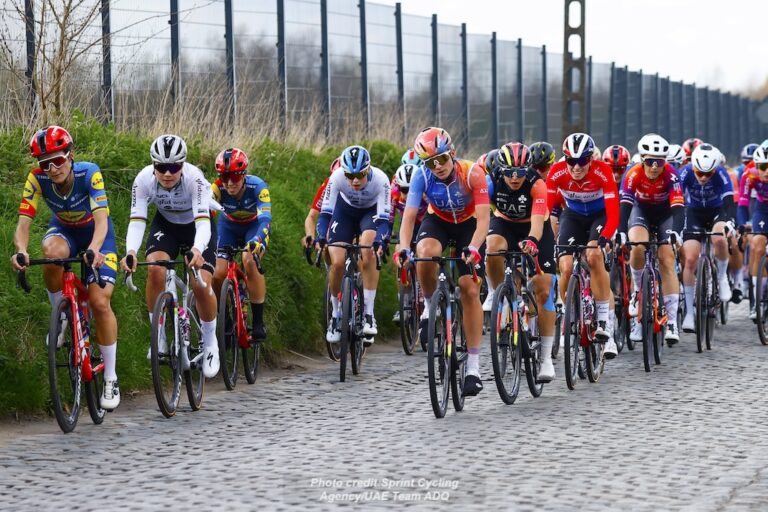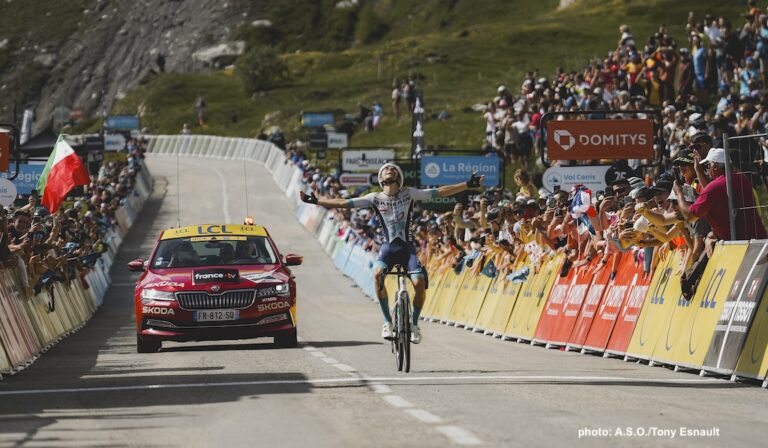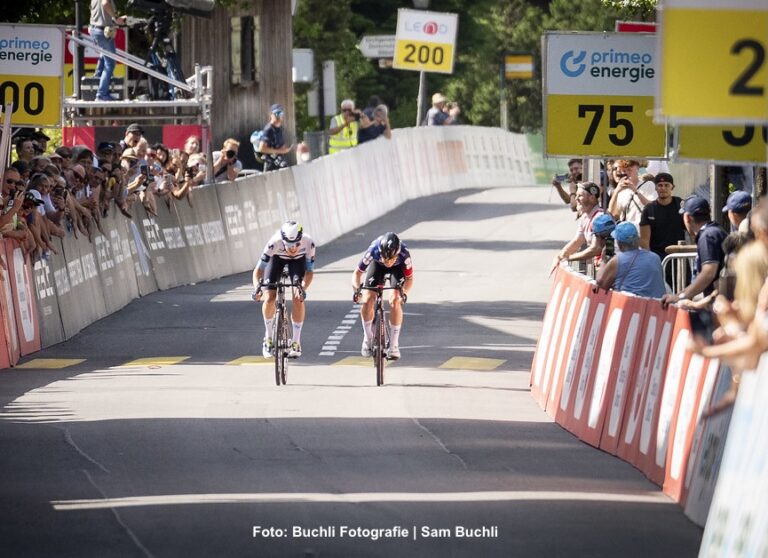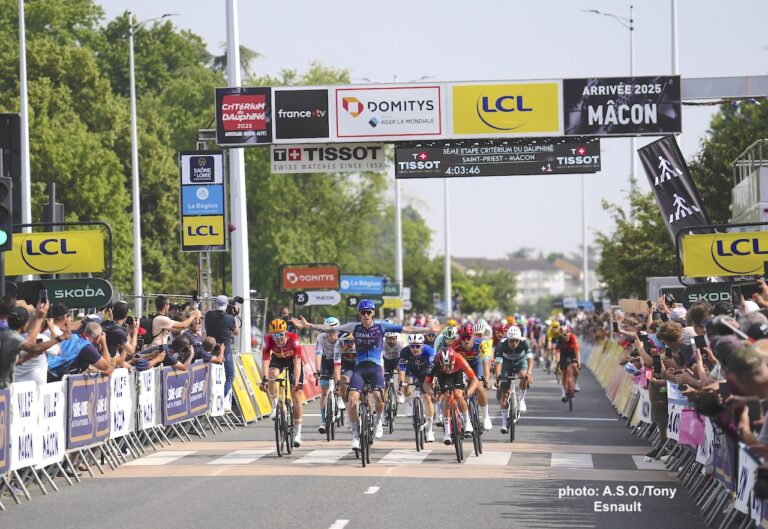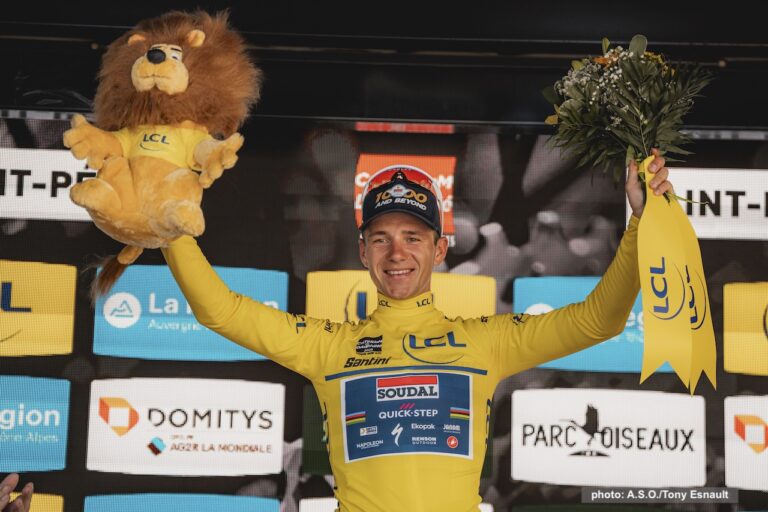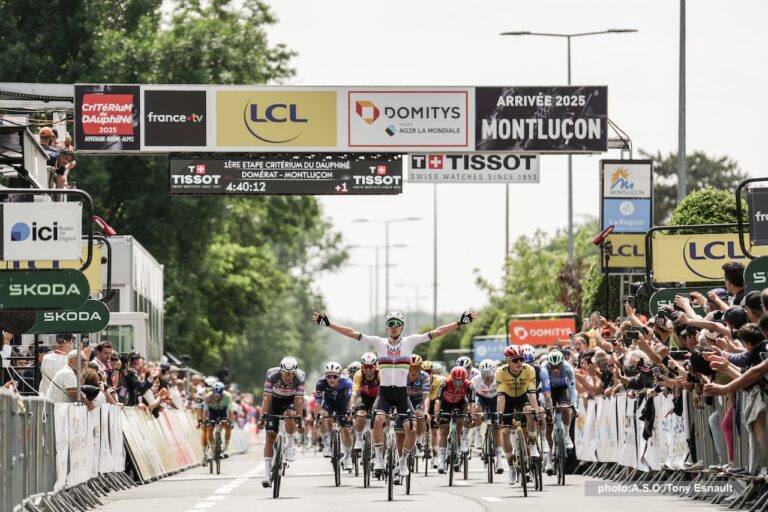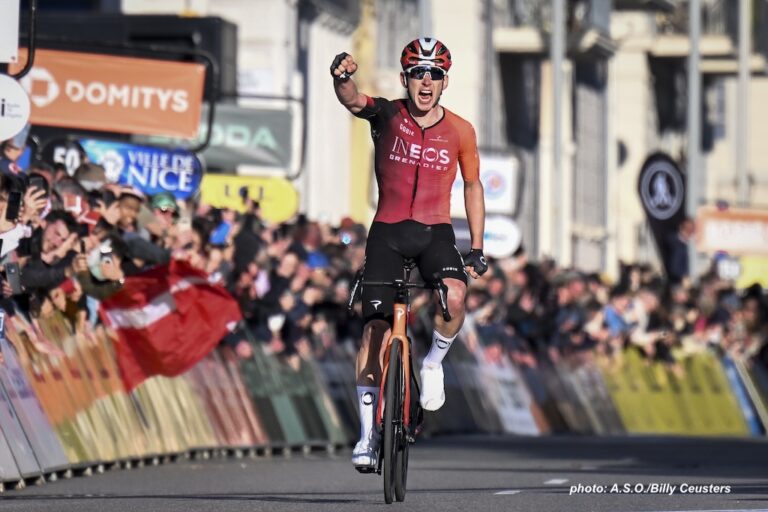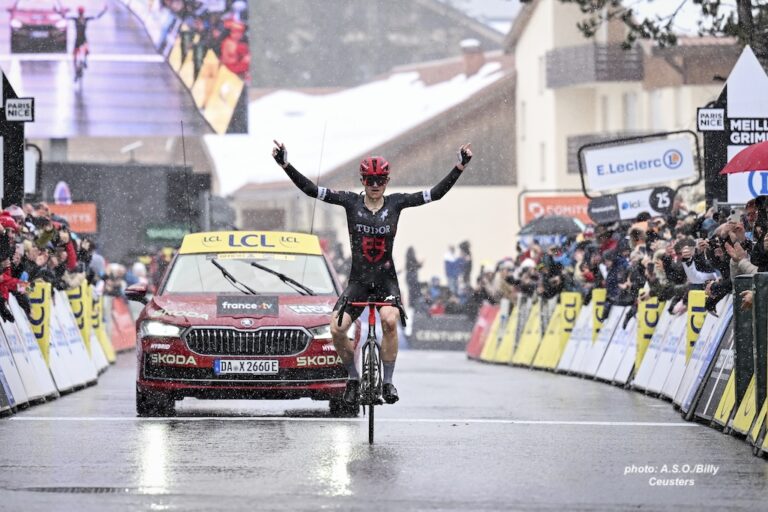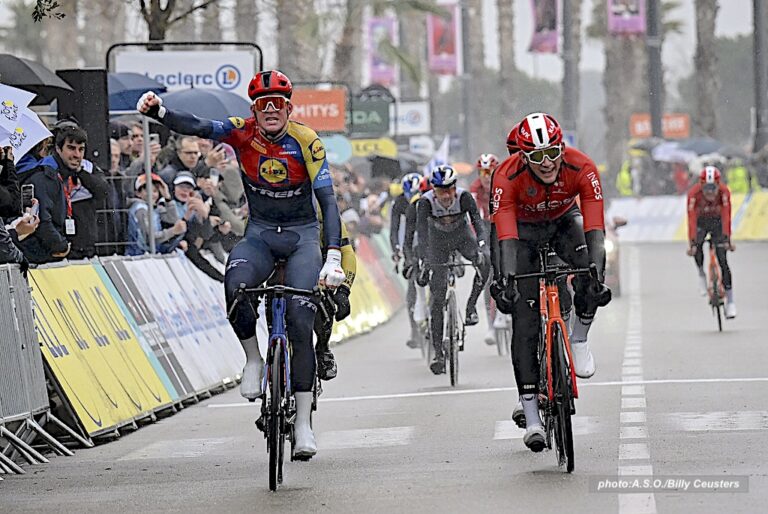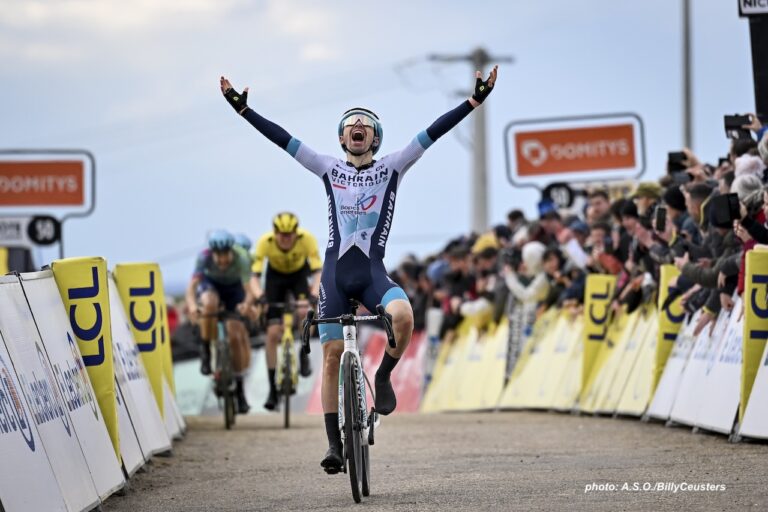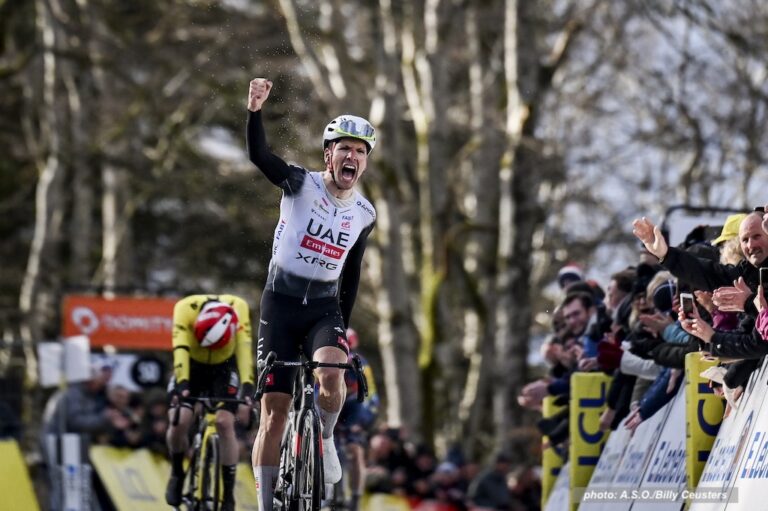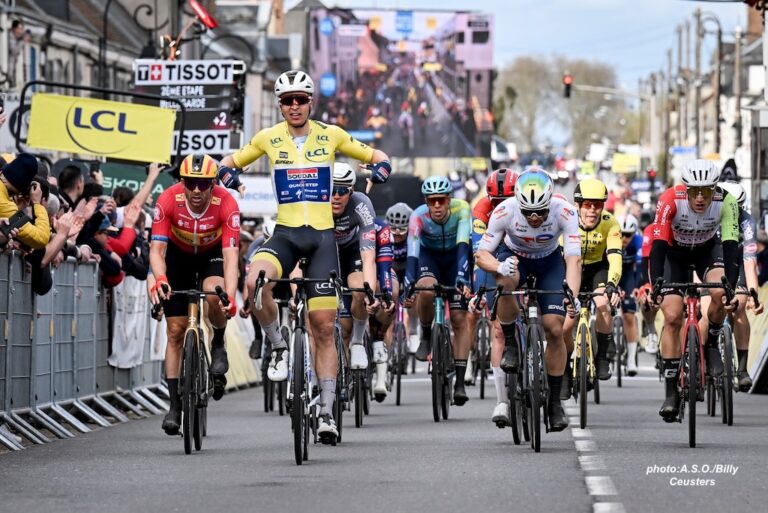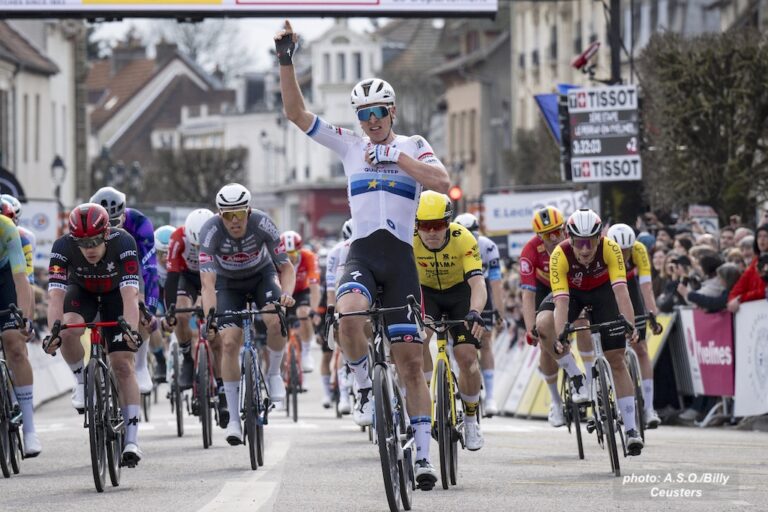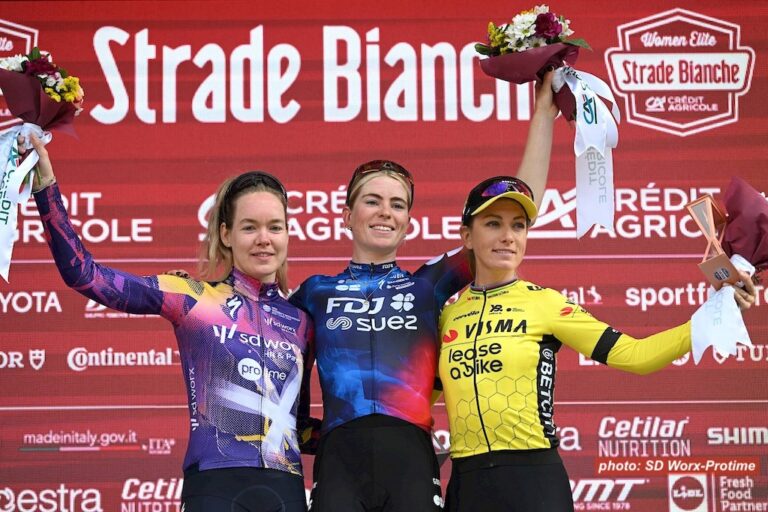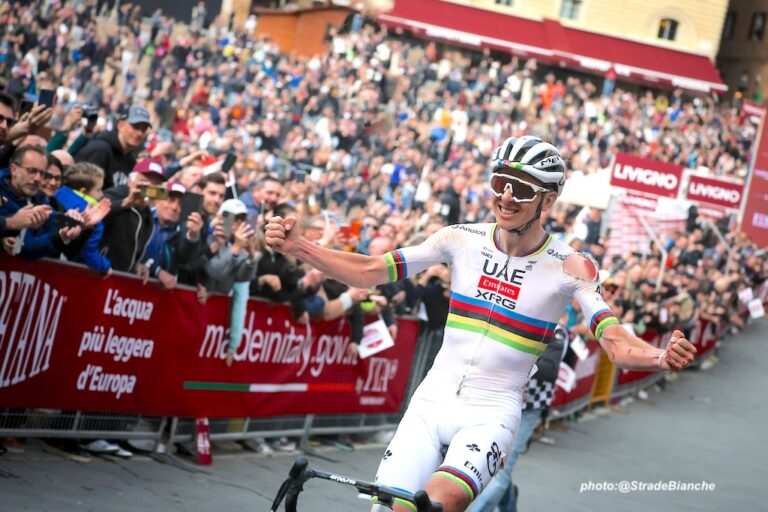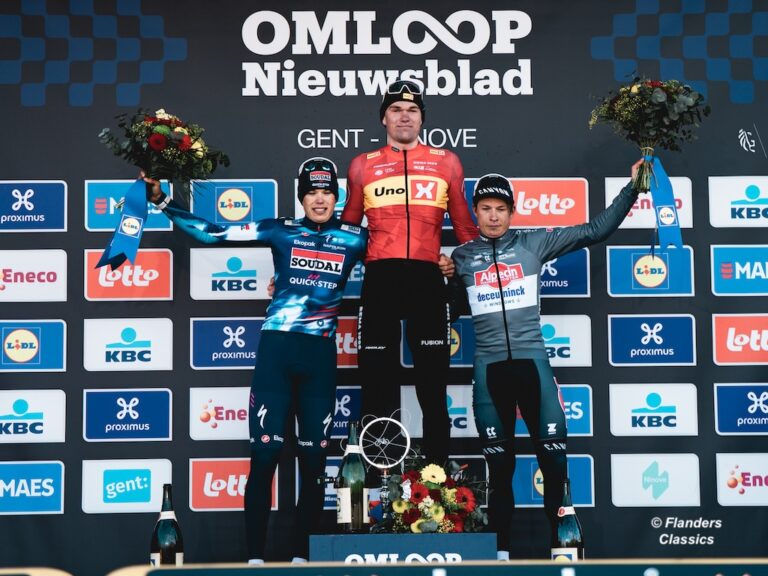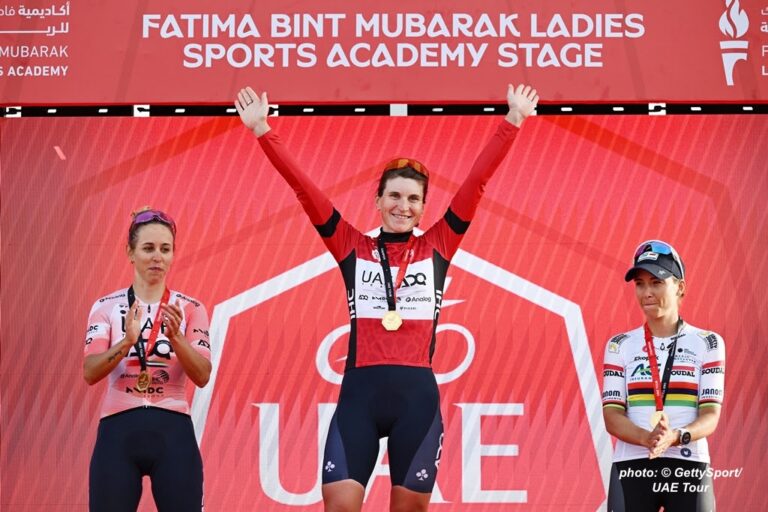Over the next three weeks, the Women’s WorldTour will be battling it out at five Spring Classics: Tour of Flanders, Paris-Roubaix Femmes, Amstel Gold Race Ladies, La Flèche Wallonne Féminine, and Liège-Bastogne-Liège Femmes. While predicting how teams will perform is no easy task, Wednesday’s semi-classic Dwars door Vlaanderen offered some insights about where teams stand and how they might perform in the coming weeks.
Seize the day – at the front.
The old adage seize the day still holds true, especially in the Spring Classics. It’s awfully hard to ride off the front, if you aren’t on the front. Riders who rode aggressively at the front in Dwars door Vlaanderen either benefited directly from their efforts or their teammates did. Lidl-Trek showed best how aggressive riding can pay off when they forced the pace on the cobbles and split the peloton, setting up the winning breakaway for teammates Shirin van Anrooij and Elisa Longo Borghini. Similarly, the individual efforts of Puck Pieterse and Fem van Empel at the front showed that aggressive riding doesn’t always need a team behind it to succeed. But those who didn’t ride at the front, like SD Worx-Protime, missed out, and their star rider, Lotte Kopecky, had to make a herculean effort on her own to bridge up to the breakaway. Woody Allen claimed that 90% of success is just showing up. For the Spring Classics that means showing up at the front.
Best laid plans can go astray
After a traffic accident up the road caused the race to be neutralized at 62km and halted for 15 minutes, many riders appeared lost when it restarted. Perhaps it was the fact that the distance was reduced from 129km to 114km, or that two climbs, the Knokteberg-Trieu and Hotond, were removed. Whatever the case, certain riders and teams normally in the action at the front were no longer there when the race restarted. In particular, SD Worx-Protime seemed to suffer the most from the neutralization and changes. Mischa Bredewold’s post-race interview revealed as much. “Before they had to stop the race, we were really in control, it was going very well. But after the stop [neutralization] we kind of lost control. We were for sure not in position. I think now the race was more determined on those cobbled sections because they took so many climbs out.” It’s an awful feeling to lose control and have your best laid plans turned upside down. But when it happens, riders need to react quickly and switch plans accordingly. During the 15 minute pause when the race was neutralized, one wonders if teams took advantage of the of the opportunity to rethink their tactics.
Brain vs. Brawn
The next three weeks of racing will require a balance between brain and brawn. Not all races are created equal and what is needed in one race may not be needed in another. With so many riders intent on watching their watts and numbers during a race, one wonders where good old-fashioned tactics come into play these days, if at all. It seems the strongest riders win regardless of team tactics. But this may be an oversimplification. Lidl-Trek has shown that SD Worx-Protime can be beaten when the right circumstances are present. Obviously, this means that teams should strive towards creating circumstances that don’t benefit their rivals, which is easier said than done. Even though Lidl-Trek didn’t win Dwars door Vlaanderen, they did everything they could do to tip things in their favor. The fact that Shirin van Anrooij failed to eliminate Vos had more to do with brawn than brains. In the end, the best tactics can’t alter physical abilities.

